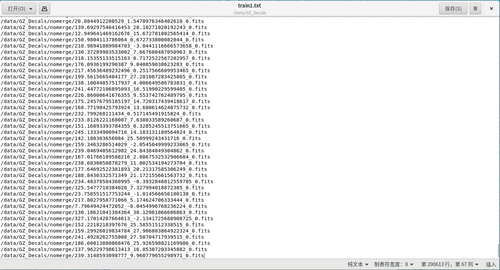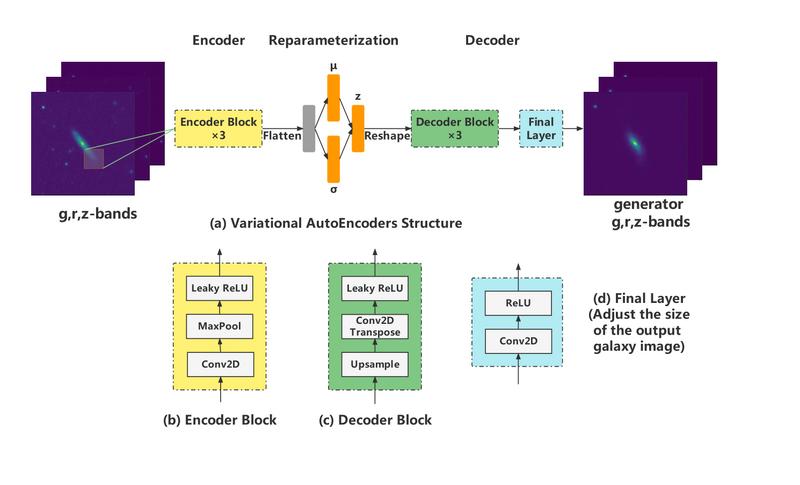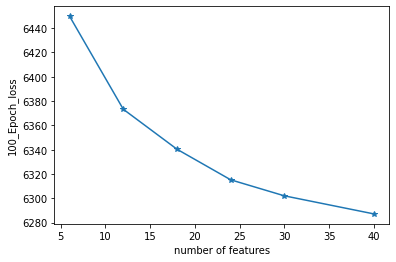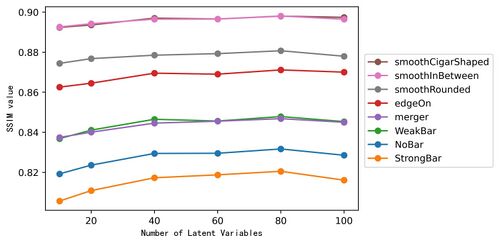Auto clustering of galaxies after dimensionality reduction
跳到导航
跳到搜索
Introduction
- This work is divided into two parts.
- The first part is to reduce the dimension of Galaxy data to low dimensional space with VAE.
Datasets
- DECaLS
- In the first step, we first filter out the galaxy data with data shape [3*256*256], and save the galaxy data paths that match this shape into a text file, which constitutes our training set. As shown in the example of text in the figure below:
- From more than 300,000 data, 290613 galaxies data matching the shape conditions were selected.
VAE Method
- The neural network of VAE structure is constructed as follows:
Result
Latent variable dimensional analysis
- The number of latent space dimensions is set, and the neural network is used to perform gradient descent fitting to the appropriate case and observe the losses. The following figure represents the losses of different latent space dimensions corresponding to training 100 epochs:
- Evaluation of different latent variable dimensions in various categories of SSIM reconstructed values.
- The above are the different representations in different latent spaces.
- The higher the dimensionality of the latent variable, the more information in the high-dimensional space it can represent, and the better the quality of the reconstructed image.
- Therefore, considering the dimensionality of the latent variable and the quality of the reconstructed images in a balanced way, the experimental results with loss function of MSE and latent variable features in forty dimensions are selected for further analysis in this work.
- The above is the first stage.
Generate data Second Method
- Galsim result.
Ground-Truth data Second Method
- CANDELS
Else
Waiting...
The address of the data is as follows: http://202.127.29.3/~shen/VAE/



